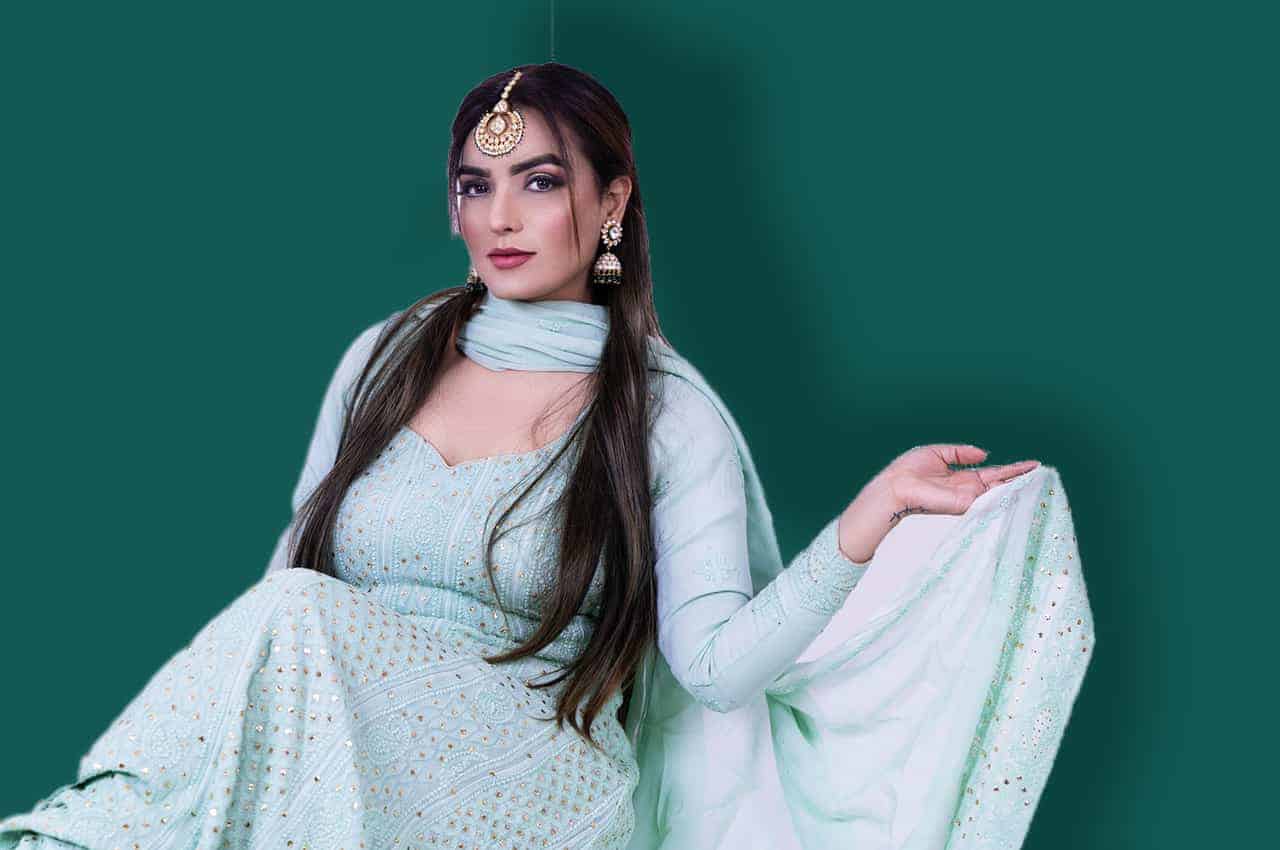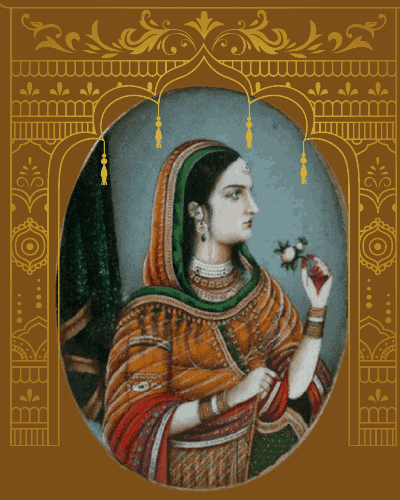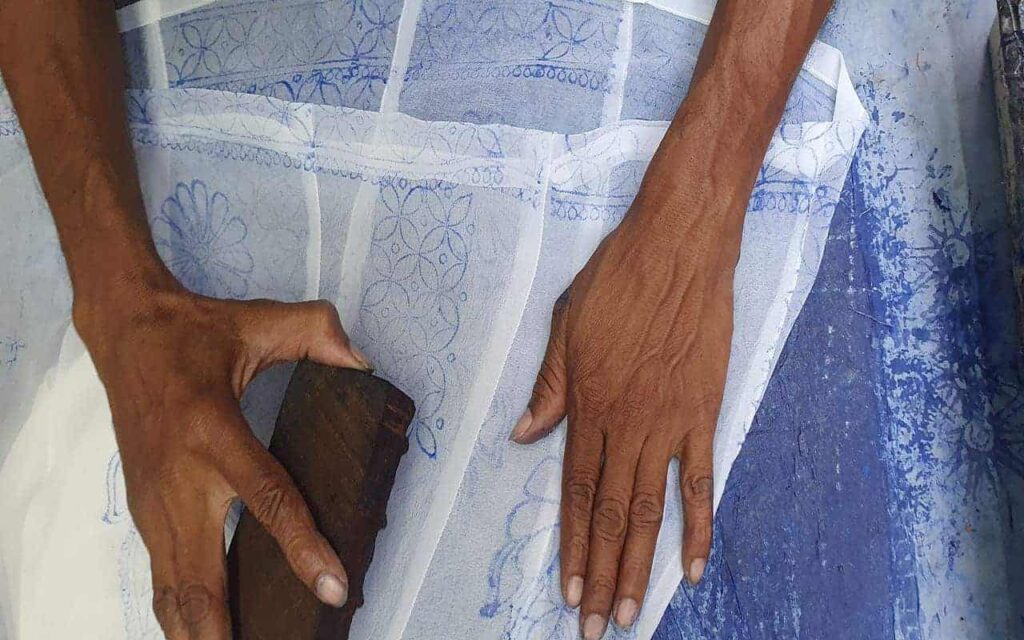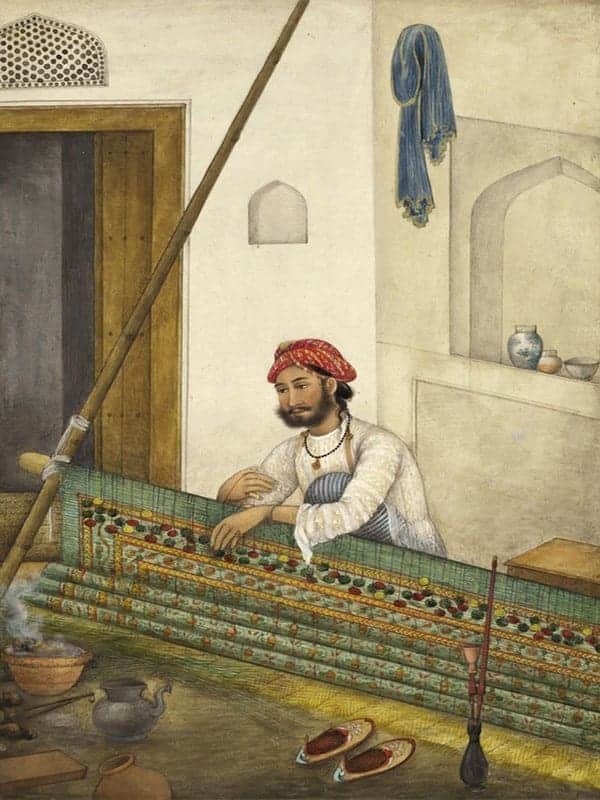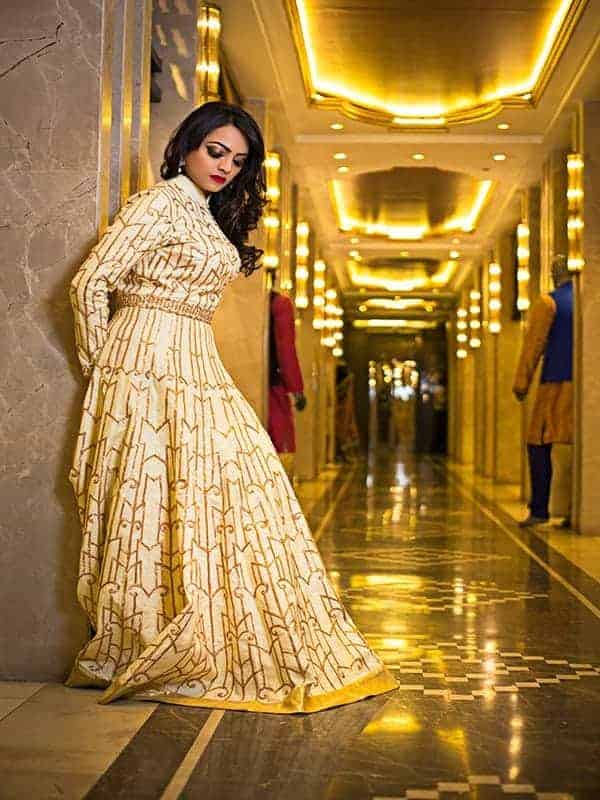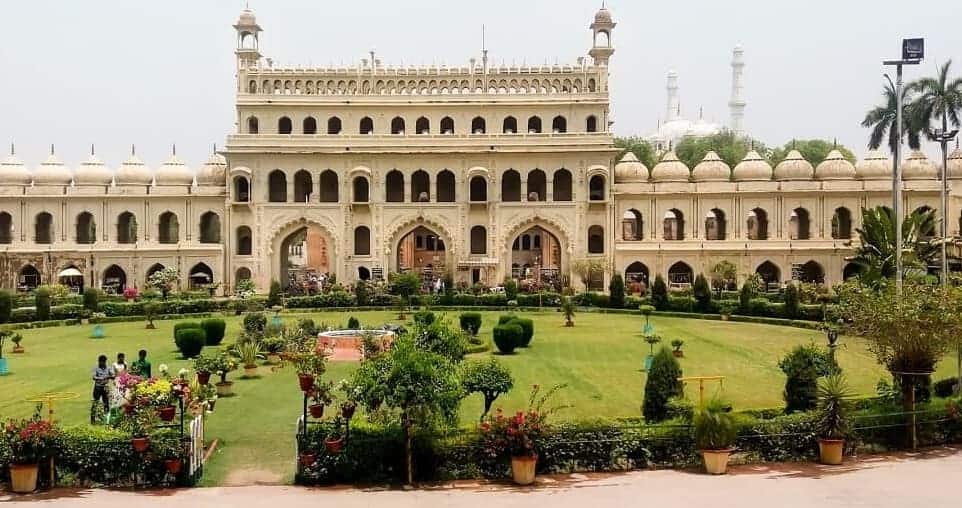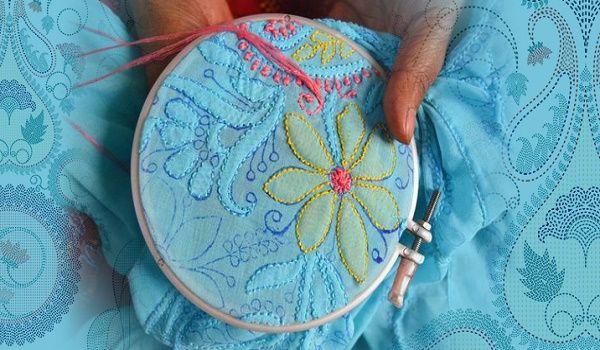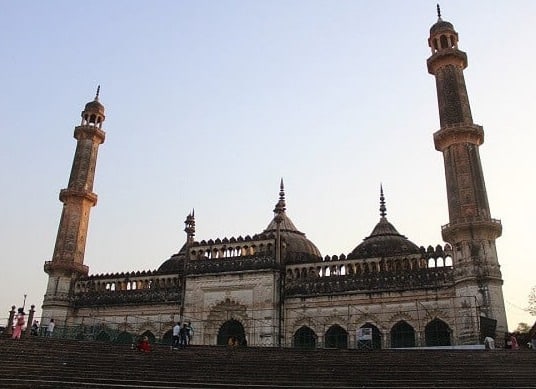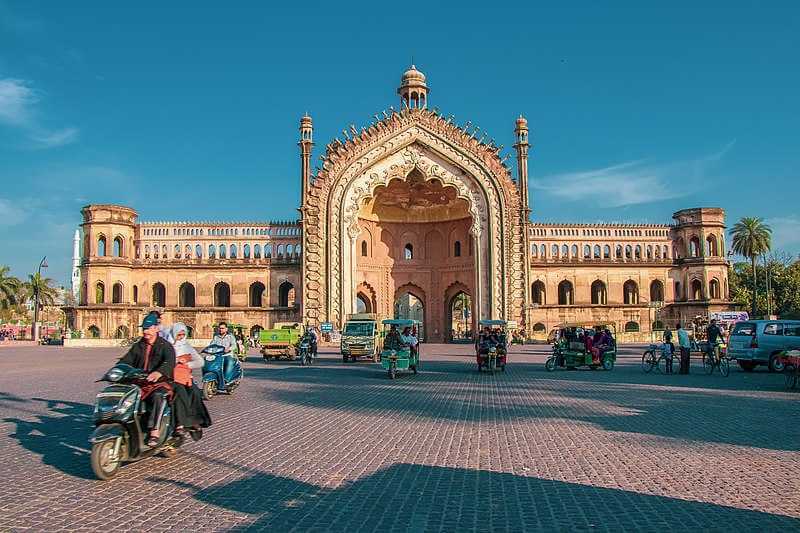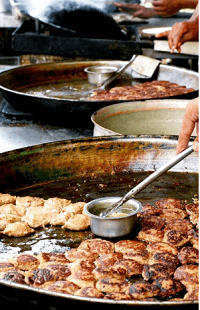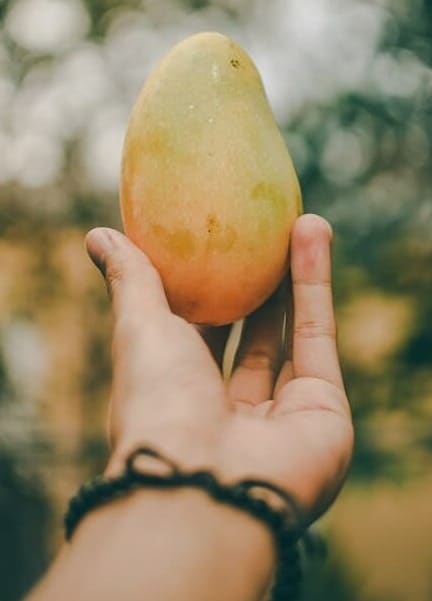Have you ever been smitten by the glistening and the dazzling star-like elements on the Chikankari? Well, this is nonetheless the Mukaish work Chikankari that ads glamour to the contemporary Chikanakri.
These minuscule shining embellishments add flair to the fabric. Basically, Mukaish work is done on the Pure georgette. The Mukash georgette sarees are very popular amongst the customer. These sarees are pieces of master craftsmanship and sometimes it takes even more than 2 months to make a single saree.
Today Chikankari is famous worldwide but only a few know that the Mukaish work has also originated from Lucknow. Chikankari is one of the sources of livelihood for centuries for the people of Lucknow.
The Mukaish work is a bit expensive and rare . this makes it an item of luxury. Today you can find females flaunting their exclusive Garra’s lehenga’s Sarees and a designer suit made up of georgette at the evening parties and ceremonies.
The majestic and royal look of Mukaish Chikankari makes it a favorite amongst embroidery lovers.
So if you also want to possess one for yourself and still not decided we have tried to detail every aspect of Mukaish CXhikankari in this article .
History of Mukaish Work
Mukaish is commonly known as Muqaish or Mukesh. Mukaish is derived from the Sanskrit word ‘Kesh’ meaning hair. It is an ancient form of metal wire embroidery.
Mukaish is embroidery in which thin hair-like metallic wires are weaved into the fabrics. These wires are then twisted back to form an embellishment or metallic embroidery.
For centuries this metal embroidery has adorned the Nawabs and the commoner, in the same way.
It is a very complex and elegant craft that has traveled to us evolving into an aesthetic art over the years.
According to some old craftsmen, Mukaish embroidery is practiced in Lucknow for more than 200 years.
During the Nawab period, the Mukaish embroidery enjoyed royal patronage, and many karkhana{ manufacturing units) were established to promote embroidery.
They say in order to differentiate the Nawabs outfits from the common man the Karigar invented Mukaish work. They started using thin wires of silver and Gold to adorn the royal outfits.
In the present day, many substitutes for Gold and silver are used to amplify the beauty of the craft.
From Lucknow Mukesh work traveled far west to the state of Gujarat and Maharastra. Mukesh work is also known as Badla work in Gujarat.
Process of Mukaish work
The process can be broadly classified into three broad categories namely:
Chhapayi
Takayi
Ghutai
1 Chhapayi or Printing
This process of Chhapayi starts with the selection of fabric on which Mukaish work is done. Usually, chiffon or georgette fabric is being used for Mukesh work.
Viscose has emerged as the new choice of fabric among Chikankari lovers.
The motifs or the pattern used as a design in printing are first carved out on the block of wood or on a paper stencil.
These designs are then printed on the fabric with the help of Neel ( indigo powder) and gum.
For color fabrics, the safeda or the white chalk is used to print the design on the fabric.
2 Takaai or the embroidery
Basically, Mukaish work is done to beautify the contemporary Chikankari. The metals used are first cut into thin sheets or strips.
These strips are then passed through flames to provide different hues to the metal.
In the next process, these strips are then beaten with the wooden hammer for hours until the wires are turned paper-thin.
Once the wires are paper-thin they are passed through the delicate fabric to form design.
The paper-thin density of the wires adds to the fineness and overall look of the garments.
3 Ghutai or flattening
The last or the final step is the Ghutai.In this process, after the embroidery is done, the fabric is flattened on a blanket or a rubber sheet. The base of a glass bottle is then rolled over the embroidery work.
This flattens the metal wire making it shine more. This is also done to remove any lump or the sharp edges of the metal thus making it a fine piece of art.
Different Forms of Mukaish Work
Mukaish work is primarily the dots. The Mukaish work can be transpired into two forms based on these processes of Takayi and can be classified as
Fardi ka Kaaqm
Kaamdaani
Fardi ka Kaam: Fard means the length of the fabric and when anything is embroidered on length is called Fardi. Fardi is created by passing a short length of Badla or the wires through the fabric to form a dot. If the fabric is thick a small needle is used to pass the wire through the fabric.
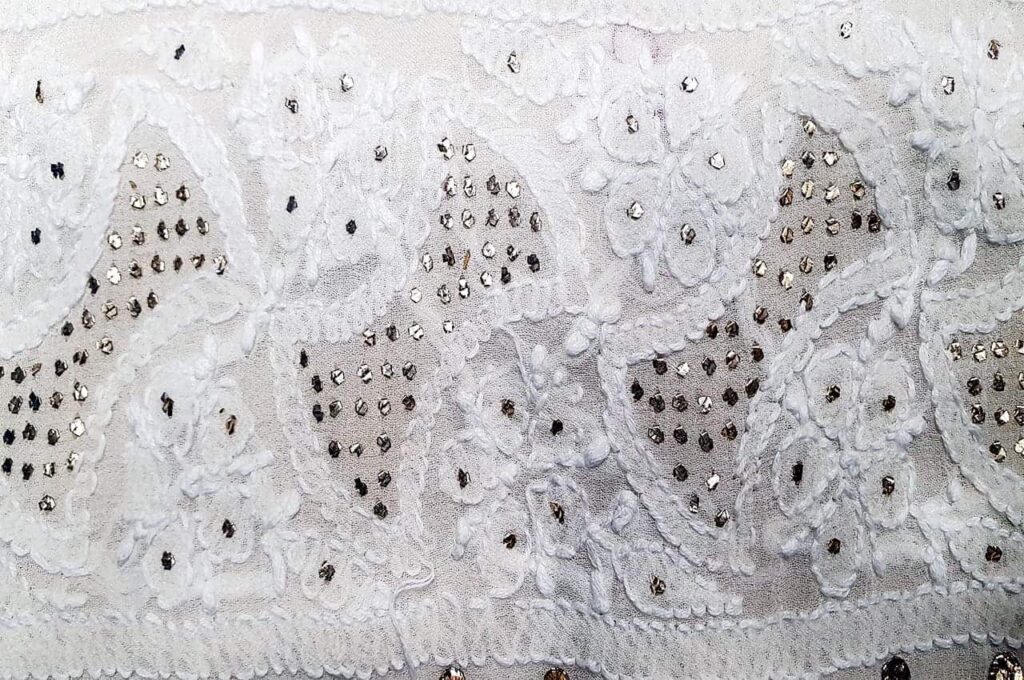
Fardi is a unique way of embellishing a piece of fabric or garments. It is used to add glittering effects like a star in the sky and glamorize the Chikankari embroidery
Fardi in other words means “dots”. Based on the quality and the quantity of dots Fardi dots can be further classified as :
Hazar Batti means the thousand such dots. It’s the main characteristic of Lucknow Craftsmanship.
Tikki or the flat sequin
Challa or the Ring
The Challa and the Tikkis are the most extensively used Fardi the Kaam. The basic purpose is to amplify the design. The width of the wire determines the size of Fardi dots. The smaller the dots the expensive they are.
Kaamdani :
Kaamdani is a metal wire embroidery made using long stitches of wire on fabric creating unique motifs.
The Badla or the wire is treated like a thread that goes in and out to make stitches. If the wire falls short to length then another wire is tied to the remaining wire.
While attaching a new wire only care is taken that the joints fall on the outer side of the fabric
This is also referred to as fancy ka Kaam as it glorifies the garment and adds glitter to its design.
Chikankari and Mukaish work
Both Chikankari and Mukaish originated from the Awadh ( Now Lucknow ). Chikankari is purely where threads are used with the needle to create design and pattern on fabrics mainly muslin, georgette, and chiffon.
In Mukaish work, fine metal strips are used to create patterns to adorn the Chikankari outfits. Chikankari and Mukesh both compliment each other.
Usually, the heavily crafted chikan and Mukesh work on white georgette sarees and lehenga are available. Mukaish could be dyed in a different color as per the customer’s choice.
Some designers have also experimented Mukesh works on different fabrics from crepe cotton to tusser to silk. The beauty added by the Muqaish embellishments to the garment makes it stand out among the rest.
The chikan and Muqaish work garments have garnered huge popularity around the world The Muqaish embedded georgette lehengas are the favorite amongst the celebrities and B town Divas.
Today’s ladies can be seen flaunting their Muqaish embedded dress at the parties.
The craftsmanship of Lakhnavi Chikan work with Mukaish is unparalleled and unprecedented.
Why Mukaish work is expensive
Mukesh work is expensive because of the following reason:
- In the Initial days, the Karigars used threads of Gold and Silver to make designs for the royal families .The Substitute of metals like copper ,aluminium used today are also expensive.
- The process of making a mukaish ebroidery is time consuming and require inttrisic labour .Some time it takes more than a month to create a single piece. This lonfg period labour cost adds to the overall cost
- There are very few artisan left who are well versed with this form of art making it an expensive form of embroidery
Mukaish Work Chikankari in Present Days
In today’s scenario, we can call it a dying art. The primary reason is the non-availability of skilled Karigar’s. The Karigar’s have either grown old or failed to transfer the art to the next generation.
A young lot of artesian have migrated to Chikankari because of the popularity and the abundance of work.
The second reason for its decline is the rise in the cost of materials. The metal prices have surged. Mukaish embroidery is time-consuming and requires more man-hour than ordinary Chikankari. Thus increasing the labor cost.
Although some designers are working effortlessly to bring back the glorified days of the Mukaish embroidery. One such designer is Anjul Bhandari. She has been experimenting with the Mukaish works in her design while maintaining the traditional look and feel of the embroidery.
Apart from her, some other prominent Bollywood designers working on Mauqaish are Manish Malhotra, Abu Jani, and Sandeep Khosla.
The Muqaish work on silk is famous for festivals and bridal wear. Celebrities like Priyanka Chopra, Mira Rajput wore Muqaish saree on different occasions.
One of the major development of today’s era is the use of metal other than Gold and silver. These metals are cheaper and more malleable. This help in beautifying the garments in different shades of hues of metal
Maintenance of mukesh work
The Mukesh work is a very delicate form of embroidery. Care is required while storing and cleaning the Mukaish work.
- Care should be taken while cleaning the mukaish work fabric. Avoid using harsh chemical-based detergent as they may outshine the metal resulting in a changed hue. If possible the garments should be hand washed or washed separately in a washing machine at a gentle mode.use mild liquid detergebts
- Do not use any bleaching agent .
- Dont use too warmwater . Always iron the cloth inside out covered with newspaper.
- Since the embroidery uses metal it should be avoided to store with fabric having threads.
- It should be packed in a polybag to avoid tangling with other garments and also to avoid corrosion of metal due to dampness and moisture.
- Look out for the fraying piece of metal. Cut the edges of the metal with sharp scissor to avoid tangling of the garments. you can even press the eroded metal with the bottom of a glass.
Mukaish product to try
The georgette and the chiffon saree using Mukaish embroidery are very popular these days. Apart from normal Chikankari Kurtis (all-time favorite ) the customer also loves the heavy work Mukesh Chikanakri lehengas and dupattas
Where to buy Mukaish Work
Lucknow is a hub of Chikankari outfits. If you get a chance to visit Lucknow you can purchase Chikankari and Mukesh embroidery from The Chowk area, and from Ameenabad .
If you are looking for a premium category you can visit the Hazratganj market or the Janpath market
To shop Mukaish embroidery online you can visit Adachikan or you can check out the latest Mukaish Collection at Nishwaclothing. This online store provides quality chikan at a very reasonable price compared to any other online store.
life of the artisian practising mukesh work
The lives of the artisan practicing Mukesh work are not as shining as the embroidery is. The artesian practicing Mukaish embroidery lives in and around the bylanes of old Lucknow in the chowk area.
They lead a very poor and miserable life with no support from industry or the government. Presently very few artesian are left. Amongst the artesian, the majority are Muslim. Most of them have grown old. Due to the low demand, there are very few adopters of this declining art.
An artisan on average working for 10 to 12 hours a day could hardly manage Rs 10000 in a month. This is far below the daily wages norms set by the government for laborers.
The condition of the women Kargars is even worse as they can’t step out in search of work. Their dependencies are totally on the middlemen who exploit them the maximum.
Conclusion
Mukaish work embroidery is very ravishing and glamorous. If you love Chikankari you will certainly be going to like Mukaish. The star-studded Mukaish saree or dress can be the life of any party or social event. In my opinion, every woman must try Mukaish embroidery at least once in a lifetime.
No matter how costly a dress you have if you don’t own a pure georgette Mukaish Chikankari your wardrobe is incomplete. So what are you waiting for .grab a one for yourself.
